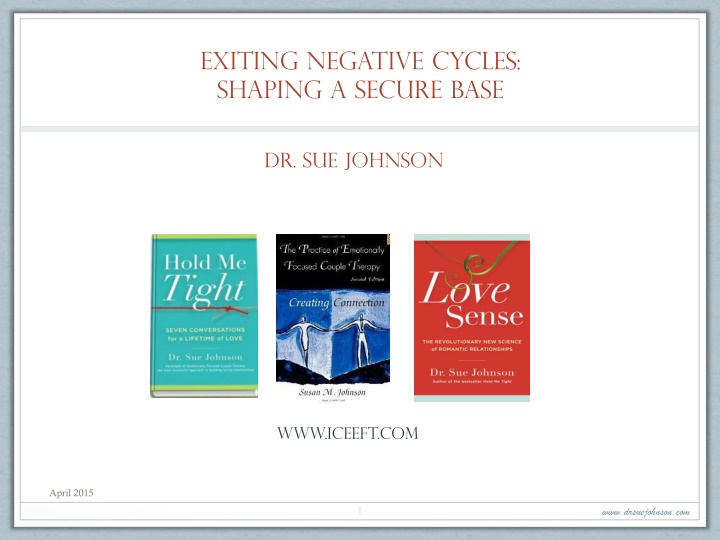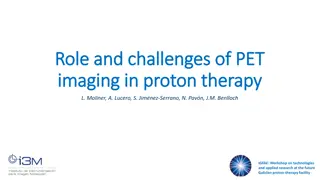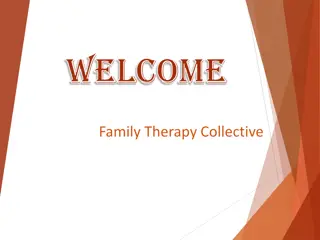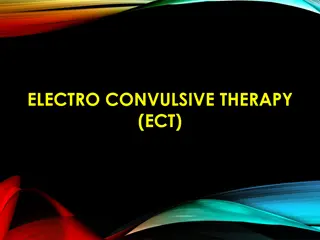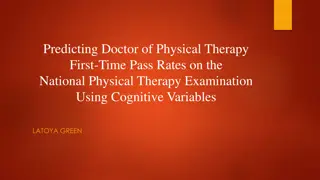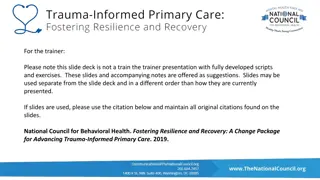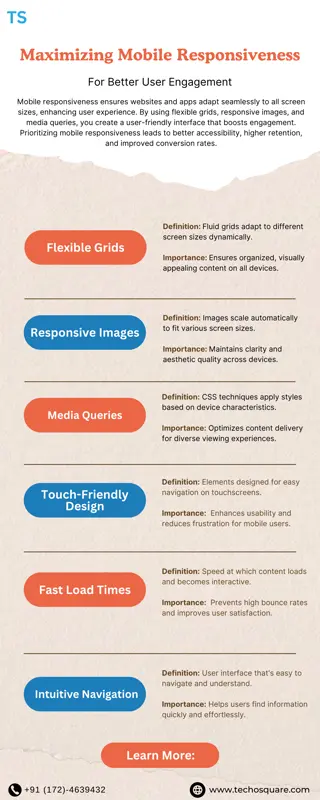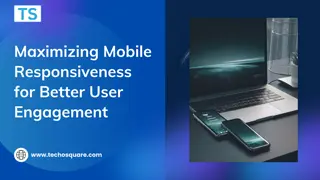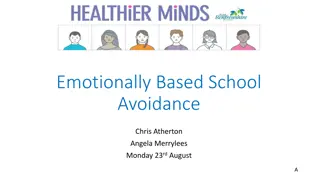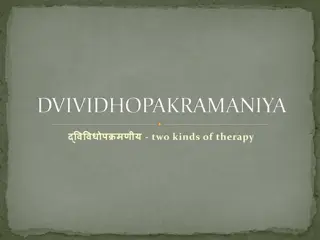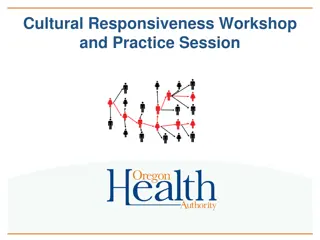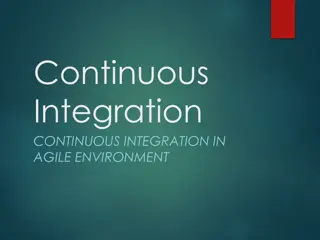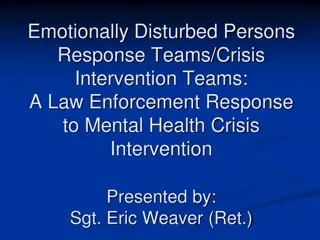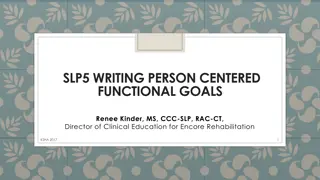Empathic Responsiveness in Emotionally Focused Therapy
Empathic responsiveness is key in Emotionally Focused Therapy, creating safety for partners to connect emotionally. By reflecting emotions and fostering secure bonding, EFT helps couples navigate conflicts and build stronger relationships. The therapy focuses on guiding partners towards mutual understanding, creating new interactions, and exploring deeper emotions. Through a series of basic moves, the therapist helps partners communicate effectively and address underlying issues, ultimately enhancing their emotional connection and intimacy.
Download Presentation

Please find below an Image/Link to download the presentation.
The content on the website is provided AS IS for your information and personal use only. It may not be sold, licensed, or shared on other websites without obtaining consent from the author.If you encounter any issues during the download, it is possible that the publisher has removed the file from their server.
You are allowed to download the files provided on this website for personal or commercial use, subject to the condition that they are used lawfully. All files are the property of their respective owners.
The content on the website is provided AS IS for your information and personal use only. It may not be sold, licensed, or shared on other websites without obtaining consent from the author.
E N D
Presentation Transcript
Exiting negative cycles: shaping a secure base Dr. Sue Johnson www.iceeft.com April 2015 1 www.drsuejohnson.com
Empathic Responsiveness is the Essence of Emotionally Focused Therapy The empathic responsiveness of the therapist creates safety. The goal is to guide partners into this responsiveness with each other. Resolve to be tender with the young, compassionate with the aged, sympathetic with the striving and tolerant with the weak and the wrong. Sometime in your life you will have been all of these. (Lloyd Shearer) Most Basic EFT Intervention: Empathic Reflection Creates safety Focuses and slows processing Better organizes & distills experience creates coherence 2 www.drsuejohnson.com
Emotionally Focused Couples Therapy Looks within at how partners construct their emotional experience of relatedness. (Using Rogerian Interventions) Looks between at how partners engage each other (using Systemic Interventions and tasks) In Order To: Reprocess / expand emotional responses Create new kinds of interactions / change the dance Foster secure bonding between partners website: WWW.ICEEFT.COM 3
THE 5 Basic Moves of EFT 1. Reflect Present Process (within/ between) Repeat these 5 moves again and again, as you move through the steps and stages of EFT. 5. 2. Explore more primary, deeper or new emotions. Integrate/Vali date/Reflect Process (View of Self, View of Other, Relationship) Tie a bow Dancing the EFT Tango 3. Set 4. Process the Enactment/ How it feels to tell/ hear. up/coherent enactment (disclose more primary emotion to the partner) 4
The Problem: W: Do you love me? (accusing tone) H: Of course I do. How many times have I told you? W: Well it doesn t feel like it (tears, looks down, turns away) H: (Sighs-exasperated) Well, maybe you have a problem then. I can t help it if you don t feel loved. (Set mouth, lecturing tone.) W: Right. So it s my problem is it? Nothing to do with you, right? Nothing to do with your ten feet thick walls. You re an emotional cripple. You ve never felt a real emotion in your life. H: I refuse to talk to you when you get like this. So irrational. There is no point. W: Right. This is what always happens. You put up your wall. You go icy. Till I get tired and give up. Then, after a while, when you want sex you decide that I am not quite so bad after all. H: There is no point in talking to you. This is a shooting gallery. You re so aggressive. Rigid pattern- blame/withdraw. No safe emotional connection-escalating danger and isolation. 5
Intimate Partner Abuse Abuse is on a continuum. C.T. effective depending on level & characteristics of abuse and abuser. Categories of abuse and abusers: a) High conflict verbal and symbolic aggression b) High conflict violence no injury cross complaining/mind-reading MOST COMMON c) Common battering biting, punching - moderate emotional abuse/control diminishment of other d) Severe battering use of weapons high emotional abuse and control (Hammel 2004) Pitbulls dysphoric, borderline, insecure function well in world Cobras - anti-social, calm when batter, very dangerous. (Jacobsen & Gottman) Intimate Terrorism versus Commonplace Couple Violence often plus emotional abuse (Wheeler & Christensen 2007) 6 www.drsuejohnson.com
Risk factors: Low income, low education, childhood exposure to abuse, conduct disorder in adolescence, anti-social personality disorder, hostile attribution bias, positive beliefs re aggression, lack of conflict resolution skills, anxious and avoidant/fearful attachment, substance abuse (Use, Abuse, Dependency, Addiction). PTSD irritability and vigilance. Couple violence can be seen as an exaggerated form of protest against perceived partner unavailability or lack of responsiveness . (Mikulincer & Shaver 2007) Triggered by real / imagined threat of rejection, abandonment and infidelity. What you cannot trust you try to control. Contraindications for EFT: Cannot create safety in session, abused expresses fear, abuser denies responsibility, no agreement for safety net outside session, asking partners to take risks and open up seems dangerous. 7 www.drsuejohnson.com
Unfolding HOT Pivotal Moments in Couple Interactions On the Station Larry suddenly sees that the train is leaving moving. He runs and climbs aboard and screams at his wife who is drinking her coffee on the platform RUN . Finally, she orients and clambers onto the train with her bags. He turns and yells, Why are you so God-damned slow? She shuts him out withdraws totally and begins the decline into clinical depression I am slow not athletic like him I will never please this man. In session, Larry is irritated but considerate. He minimizes and justifies. He was stressed and so his response was unfortunate . But she should be more fit and on the ball and less sensitive . She tears turns away I think you need a different wife. (Critical pursuer and depressed withdrawer cycle). 8 www.drsuejohnson.com
First, tune into the attachment / emotion channel. Therapist moves into: Focusing in reflecting steps / responses in drama the habitual pattern of disconnection. Validating her pain from an attachment frame his sense of alarm (Ensure secure base). Reprocessing the elements in Larry s emotional response. Finally creating an enactment with new emotions shaping new signals and scaffolding a new dance. Reflecting / consolidating this new dance. Reprocessing Larry s emotion involves reshaping his awareness and formulation of the Trigger, Initial perception, Body response, Meaning of experience and how these all create the action his communication with his wife. 9 www.drsuejohnson.com
Interventions in EFT Task 1: Reprocessing Emotion Reflect(name, order, distil) emotional processing as it occurs. Make explicit. Use NACC language: Now and immediate, Alive vivid felt, Concrete, tangible, specific, Attachment channel. Validate habitual emotion regulation strategies, ways of seeing, action tendencies, stuck places, attachment longings and fears, and shifts new steps in the dance. Ask Evocative Questions - unpack automatic ways of constructing experience. Replay key process moments. Name and integrate the elements of emotional experience. What happens to you when you hear that tension in her voice? Heighten elements of experience (use repetition, images) to deepen clients engagement. Interpret make small conjectures at the leading edge of experience. Tentative. Most intense using proxy voice. 10
Interventions in EFT Task 2: Creating New Interactions Reflect - steps in the partners dance and the impact of dance. Reframe Attachment meanings, interactions / cycle. Shape interactions Request the direct sharing of clear distilled messages. Respect reluctance and slice risks thinner (simply share how hard it is to share). Contain negative messages with catch the bullet interactions. Therapists help clients: Enact present positions to make them clear. Turn new emotional experience into new signals to a partner Enact to heighten new responses and their impact on the other. 11 www.drsuejohnson.com
When love hurts: EFT with highly escalated couples Sharp attack attack dance in Find the Bad Guy interactions. A focus on defining who is wrong, flawed and to blame for relationship distress. Also fast rigid repetitive dance of blame and hostile criticism often followed by stonewalling or explosive anger. No trust labelling of the other no openness to partner reaching, no islands of safety. Cycling volatility little effective affect regulation. Therapist unable to shape secure base in session/becomes dysregulated Challenge: Keep emotional balance identify triggers keep CURIOSITY Attachment lens focuses on threat vulnerability primal panic helplessness - desperation that is the music of this escalating dance. Disconnection and attachment protest fuel this dance. 12 www.drsuejohnson.com
Interventionsforescalatingcouples: 1. Reflect process of interaction cycle, attachment impact. Cycle takes the blame. 2. Reflect surface emotion then evoke/move into underlying vulnerabilities with relentless empathy and slow pace. 3. Direct session STOP We are stuck take control of interaction (example when I touch your shoe ). Contain hostility, minimize triggers. 4. Soothe with validation of both partners. Use touch, voice, evocative images. To be heard and seen by therapist is calming. 5. Catch bullets explore hostile responses to partner. 6. Reframe or Interpret e.g. anger as desperation. 13 www.drsuejohnson.com
Interventions for escalating couples: 7. Retain balance when hostility is directed to the therapist. Therapist uses the model as a secure base stays with process not content 8. Make messages explicit/concrete and so owned. Add attachment meanings: e.g. You want to show him that he can t hurt you without consequences, as if you don t matter? 9. Evoke compassion for other by showing compassion to other outlining their pain. 10. Confront partners with process reflections. 11. Confront abuse with self-disclosure ( I cannot allow ) Link to client s goals. 14 www.drsuejohnson.com
"Attachment theorists have pointed out that, perhaps because of this interdependence, incidents in which one partner fails to respond at times of urgent need seem to disproportionately influence the quality of an attachment relationship Simpson & Rholes, 1994 What matters most to Pain Central is not the philosophical category a slight belongs to but the level of jeopardy it threatens like a shattered knee or a scratched cornea, relationship ruptures deliver agony Lewis Armani & Lannon, 2000 15 www.drsuejohnson.com
ATTACHMENT INJURY A betrayal of trust / abandonment at crucial moment of need. A form of relationship trauma defines relationship as insecure. An impasse in repair process blocks trust. Attachment significance is key not content. Indelible imprint only way out is through 16 www.drsuejohnson.com
RESOLUTION OF ATTACHMENT INJURIES Articulate injury and impact. NEVER AGAIN! The other acknowledges hurt partner s pain and elaborates on the evolution of the event. The hurt partner integrates narrative and emotion. He/She accesses attachment fears and longings. The other owns responsibility expresses regret while staying attuned / engaged. (I feel your hurt your pain impacts me) The hurt partner asks for comfort / reassurance. The other responds antidote bonding event. Relationship is redefined as potential safe haven. New narrative is constructed. 17 www.drsuejohnson.com
